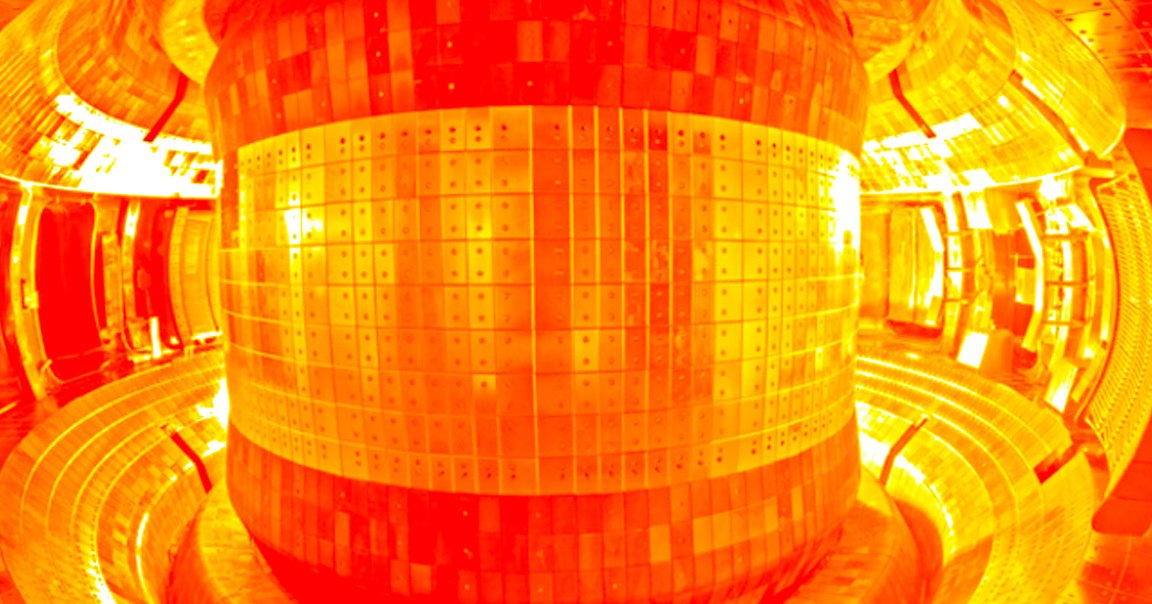
It’s a Hot One
Things are heating up in China.
On Tuesday, a team from China’s Hefei Institutes of Physical Science announced that its Experimental Advanced Superconducting Tokamak (EAST) reactor — an “artificial sun” designed to replicate the process our natural Sun uses to generate energy — just hit a new temperature milestone: 100 million degrees Celsius (180 million degrees Fahrenheit).
For comparison, the core of our real Sun only reaches about 27 million degrees Fahrenheit — meaning the EAST reactor was, briefly, more than six times hotter than the closest star.
Nuclei Smash
When two hydrogen nuclei combine, they produce an enormous amount of energy. That process, known as nuclear fusion, is how our Sun generates light and heat, and it’s the great white whale of the energy world — if we could find a way to harness it, we’d have a near-limitless source of clean energy.
Tokamaks like EAST could help us do just that. They’re devices that use magnetic fields to control plasma in a way that could support stable nuclear fusion, and it’s this plasma that EAST heated to such an incredible temperature.
Going Nuclear
Not only is EAST’s new plasma temperature milestone remarkable because, wow, it’s really hot, it’s also the minimum temperature scientists believe is needed to produce a self-sustaining nuclear fusion reaction on Earth.
Now that China’s “artificial sun” is capable of heating plasma to the necessary temperature, researchers can focus on the next steps along the path to stable nuclear fusion.
READ MORE: How Hot Is the Chinese Artificial Sun? [Chinese Academy of Sciences]
More on nuclear energy: Tech Billionaires Are Pouring Money Into Fusion Research